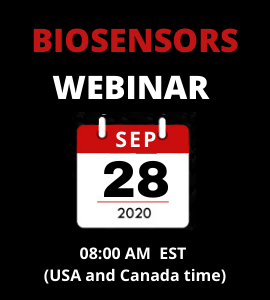
Ishita Auddy
PhD Student, Indian Institute of Food Processing Technology, India
Title: Development of amperometric multi-enzyme biosensor to evaluate the adulteration in Virgin coconut oil (VCO)
Biography
Biography: Ishita Auddy
Abstract
Virgin coconut oil (VCO) is costly, and due to this reason, the marketers opt for adulteration with coconut oil. Diglyceride is the only parameter in VCO which can be used to identify adulteration with coconut oil. The existing analytical techniques used to detect the diglyceride content are based on chromatographic techniques, Nuclear Magnetic Resonance (NMR) and other spectroscopic methods. However, these methods are complicated, time-consuming. Hence, an enzyme-based amperometric biosensor may be the feasible solution to determine the diglyceride content in VCO. A multi enzyme-based amperometric biosensor was developed using a three-electrode type system. The characterization study of the immobilized working electrode was done using a Scanning Electron Microscope (SEM) and cyclic voltammetry. The working electrode process parameter like potential, % glutaraldehyde, gelatin concentration, BSA concentration and pH of the buffer has been optimized. The empirical relationship was developed between the diglyceride and output current. Different ratios of adulterated samples were taken, and the validation of the biosensor was done using HPLC method. The maximum response was found at the potential of -0.4V with 2.5%gluteraldehyde and 45 mg of gelatin at pH 7.0. Linear empirical relation developed was found to have a coefficient of determination (R2) =0.99. The validation study showed no significant difference at 95 % confidence level. The precision (CV%) was found to be 0.15±0.56 and 0.1±0.32 for the first day and seventh day, respectively. The detection limit was found in the concentration range from 2ppm to 1200 ppm of diglyceride with a detection time of 10 seconds per samples. Hence, the developed biosensor can be used to evaluate the adulteration in VCO and was observed to be reused for about 15 days.


